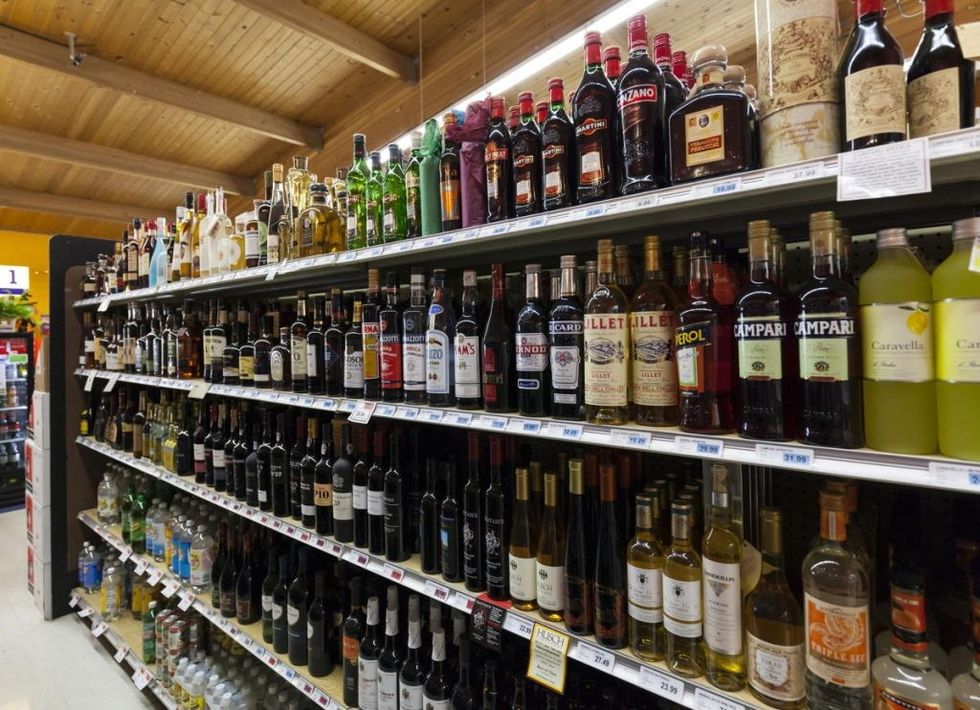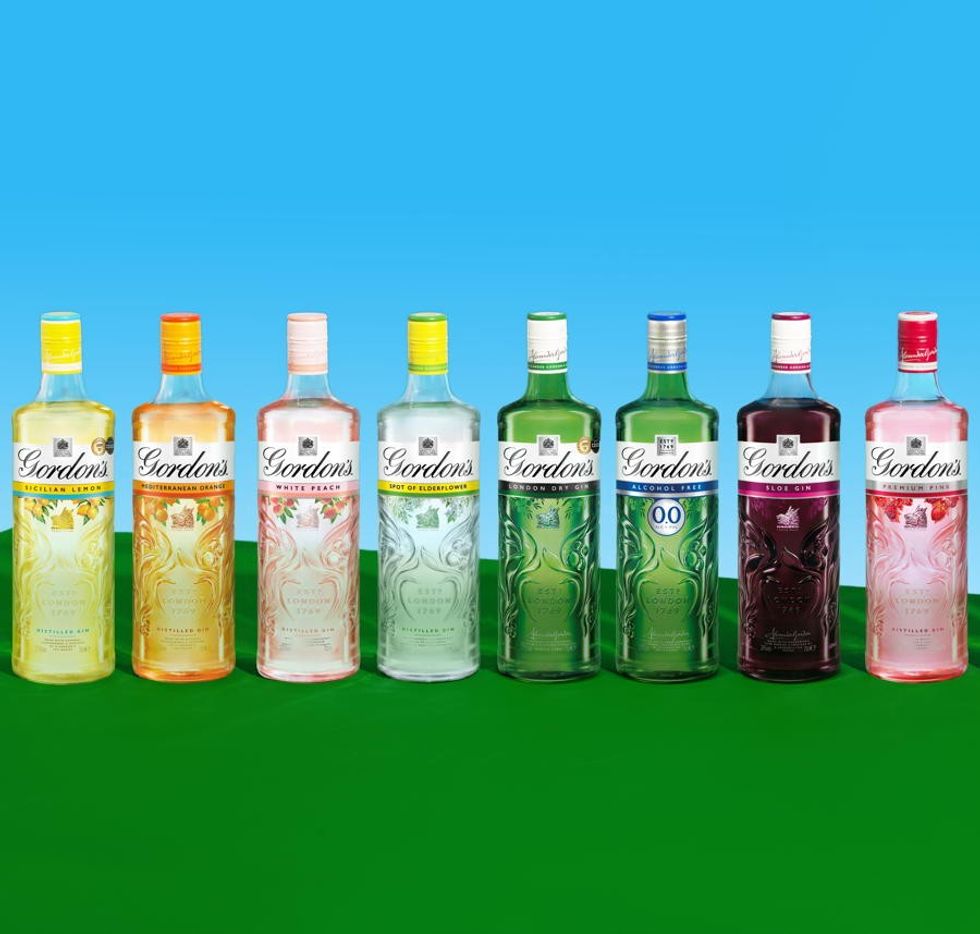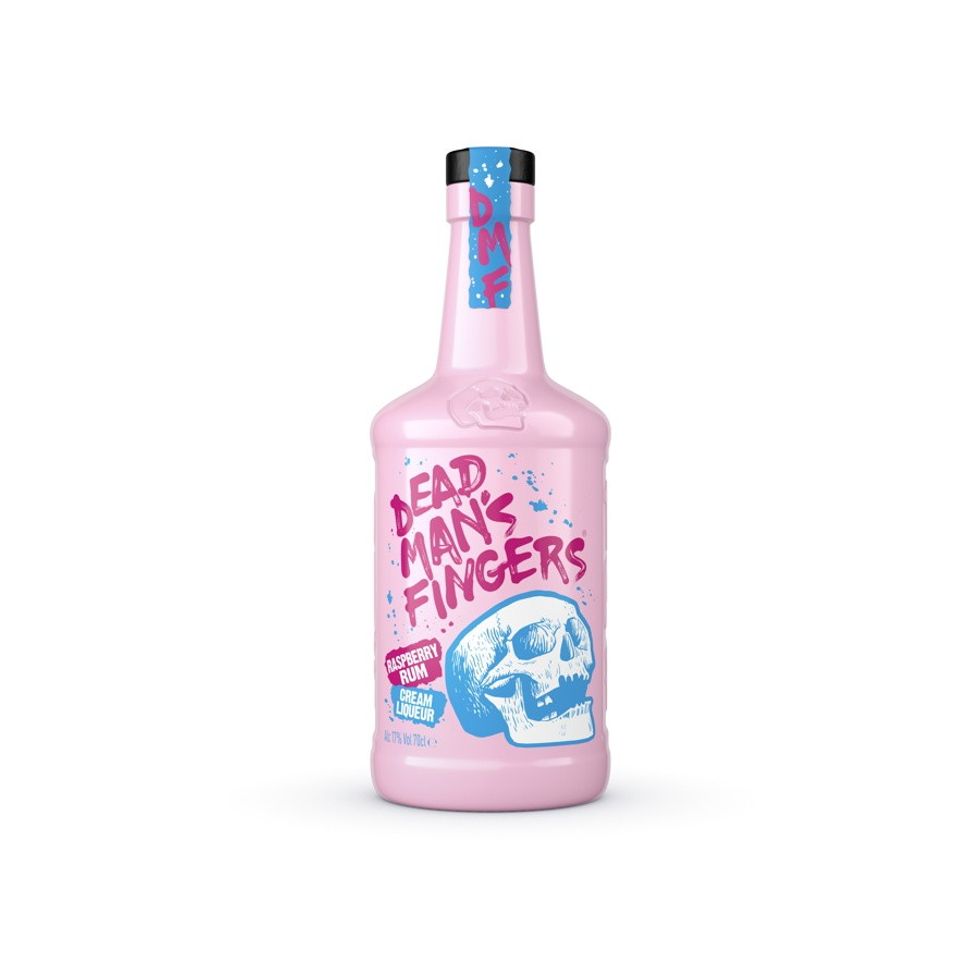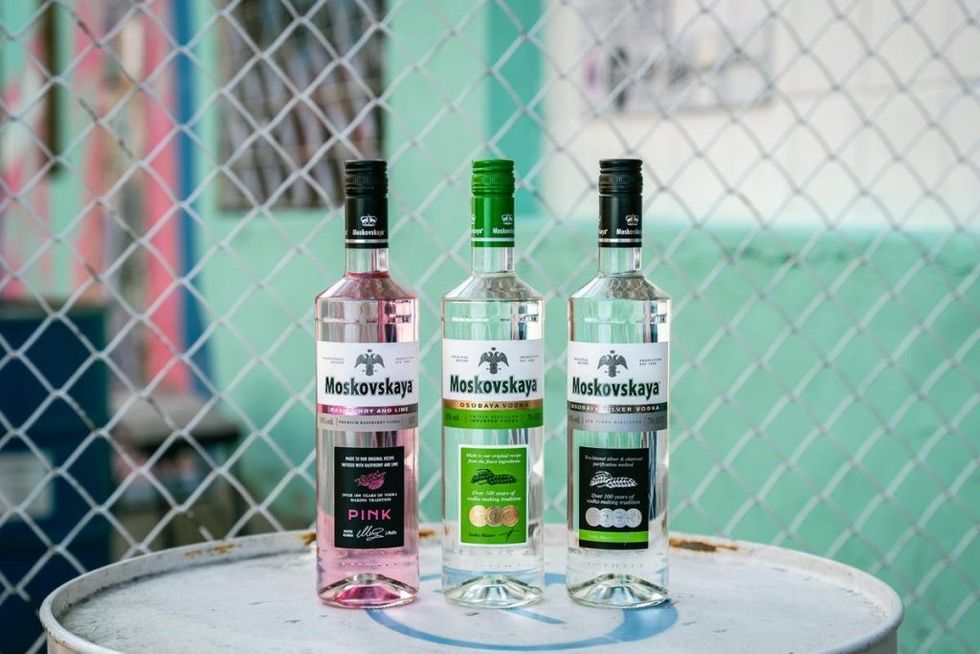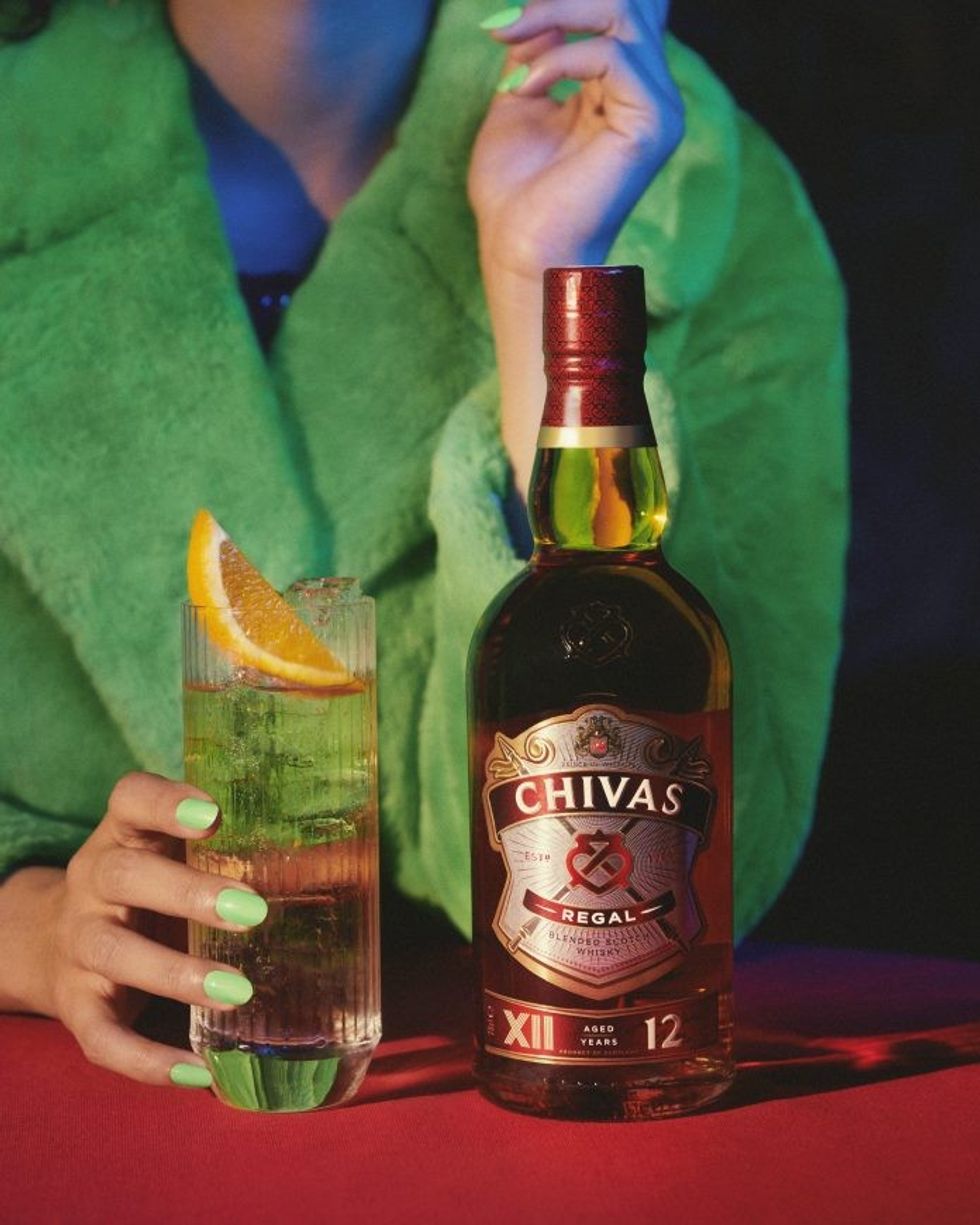It used to be the case that when we spoke about spirits, we chiefly meant whisky, gin and vodka, and within that area there would be maybe half a dozen brands people could easily name. Beyond that standard group there stood brandy and rum, and then the exotics such as crème de menthe and sambuca.
Today, much as domestic cuisine has vastly expanded under the influence of the “world food” concept, the universe of spirits has been similarly globalised, regionalised and infinitely differentiated – and more than ever enjoyed at home.
Never before has there been such a huge variety of every kind of liquor easily available and easier for a c-store to curate to offer a fabulous variety and range of spirits for shoppers.
The latest figures from Statista for worldwide spirits consumption paint a picture of a sector in rude health, with global revenues adding up to $521,653m (over half a trillion dollars) in 2022, with the market predicted to grow healthily, at an annual compounded growth rate of 5.31 per cent between now and 2025.
In 2022, expected per person revenues to the spirits industry of $68.53 will be generated – that means every adult will spend £50 on their favourite tipple – by 2025, still under a third (29 per cent) of this cash will be spent in the on-trade meaning the majority of spirits – 4.8l per person this year – will be consumed in-home. The task is to relocate a larger proportion of that revenue from multiples to independent retailers.
Mine’s a premium one
We have seen increased interest in spirits culture during the COVID crisis as people forced to stay home became more adventurous, both in the kinds of spirits they purchased, and what they did with them – leading to a notable upsurge in cocktail-making, and the related sales of accessories, mixers and other ingredients.
In a recent Pernod Ricard earnings call, a spokesperson was very optimistic about the cocktail sales environment: “I think people will still want to enjoy cocktails at home,” he said. “I think people have invested quite a lot of money and effort in building home bars and having a repertoire of drinks, and the demographics are very good in this area as well. Younger people really want to experiment with drinks. I think one of the top-selling items on Amazon during COVID was a cocktail shaker. People have got into the habit and in general, in this trend towards cocktail making, I think the penetration will continue to increase. I would be quite positive about the future of home cocktail making.”
One sales trend that appears to have continued on a pre-pandemic course is that of premiumisation. That makes sense as part of a secular cultural change, and obviously tracks increased living standards; but even so, it might even survive the upcoming cost of living shock as people prefer to buy less but higher quality in response to squeezed incomes (and chimes with the trend of lower overall alcohol consumption).
Sandra Brunet, Marketing Director, Campari Group UK, says that she believes that premiumisation continues to drive the alcohol sector, including the Aperitivo category, and encourages retailers to be bold with the premium spirits they carry. “For example, by stocking Campari, gin, and vermouth, retailers can inspire their shoppers to purchase the ingredients for the Negroni, now the bestselling classic cocktail in the world.” Matching cocktail/long-drink making with premiumisation, she emphasised that home mixology was a big trend last year, and she expects to see it continue in 2022 – with an added focus on premium cocktails.
“We’re also seeing an increased tendency towards branded products – amongst both delivery and in store shoppers – underlining the opportunity for premium branded products,” added Brunet. “These shoppers are open to also paying a price premium for higher quality items, demonstrating a clear sales imperative for retailers stocking premium lines to benefit from increased basket spend in store.”
At Diageo, Head of Category Development for the Off Trade, Lauren Priestley, is equally as enthusiastic for upgrading the spirits offer, and that they should maximise the opportunity leveraging key brands.
“Brands play an important role for consumers when they are choosing which alcohol to buy, as they typically stick to ones they know and trust and rely on them for great quality and taste, which results in a higher rate of sale,” she says.
“We suggest placing well-known brands alongside their variants as a great way to guide customers to these products. Clear POS signage can also help customers navigate a range and find their liquid of choice”
Diageo’s stable of brands, spirits such as Captain Morgan, Johnnie Walker, Gordon’s London Dry and Premium Pink Gin – incidentally the most successful new spirits product development in Great Britain in the last decade - retailers can keep customers interested and encourage them to continue exploring other variants within the range: “Merchandising is key to maximise a spirits range’s potential.”
Trending tastes
The past decade (or more) has been the land of gin and tonic, and it has been the gin distillers who have really opened the world’s eyes to the realm of flavours that can be infused with spirits to widen and freshen the appeal of spirits for the younger generations in their twenties and thirties, as well as the older drinkers who are re-awakening to the new tastes (and increasing the sales of brown spirits such as rum, whisky and brandy).
In terms of new gin flavours and mixers, Diageo’s Priestley says that “gin forms the base of many popular mixed drinks, such as G&Ts and Spritz serves. Innovation of variants in the category has been a focus for some time, with many brands producing new products in line with growing trends.”
“We have recently seen the launch of some exotic new flavours including Gordon’s White Peach Distilled Gin, Gordon’s Sicilian Lemon Distilled Gin and Tanqueray Blackcurrant Royale. For retailers, leveraging trending flavour profiles will be key,” she adds.
Other examples of the taste explosion in the gin offer includes Salford’s SIS4ERS distillery, which launched a range of 20CL bottles across its five gin flavours in January, including Lime and Thyme, Strawberry, Caramel Espresso and Passion Fruit & Cardamom flavours (as well as Signature).
With an eye on the blossoming RTD market – another runaway trend in the mixed spirits category, RTD – Kerry Collins, Hayley Robinson, Kate Haslam, and Lucy McAvoy, the Salford’s SIS4ERS female distilling experts also released their first range of gin and tonic pre-mixed cocktail cans, available in Signature gin and Indian tonic and a Strawberry gin with elderflower tonic. In the Pernod Ricard earnings call, where the overall picture was extremely rosy, the spokesperson remarked, “I do believe that there is a role for RTD and to recruit new younger consumers and in different types of moments and, and occasions. It's a topic that we are we are working on.”
Meanwhile, premium gin brand Whitley Neill has announced the launch of a new Oriental Spiced Gin variant inspired by founder Johnny Neill’s travels to the Indian subcontinent in the late 1990s, with a focus on the exotic flavours and aromas of the Orient (juniper is complemented by cardamom, citrus, cumin and pepper. All of which is rounded off with a long, elegant, balanced finish full of pepper and savoury spice (RRP £26; ABV 43%).
Staying with clear spirits, there is much activity among the vodka and Tequila brands, which have successfully positioned themselves as a young person’s party drink with the clear liquor good for both mixing and shots.
Rum trailblazer Dead Man’s Fingers, from Halewood Artisanal Spirits, has now moved into the tequila area with the launch of a new Tequila Reposado, available via Booker (RRP £22).
The brand is bringing its edgy, bold branding to tequila for the first time, along with a quality Reposado liquid which has been aged in bourbon barrels to create rounded notes of vanilla and honey. “Tequila has seen good growth over the past couple of years, particularly within in the on trade ahead of the pandemic, but then also benefitting from the rise in popularity of cocktails at home during lockdowns,” said Global Marketing Manager Rachel Adams. “As a result, it’s a really exciting time to be entering such a vibrant category.”
As an illustration of the sheer possibilities of synthesis across spirits and flavourings/textures, Dead Man’s Fingers has now forayed into the cream liqueur category with the launch of its new Raspberry Rum Cream Liqueur.
“The cream liqueur category continues to see phenomenal growth and is now adding the most absolute value year on year to the spirits category in UK off trade,” said Adams.
The pastel-pink bottle is emblazoned with the distinctive the distiller’s skull branding, and is available now (in 70cl, RRP £17) with its iconic skull jars in limited edition Dragon Fruit and Liquorice& Blackcurrant Rum flavours.
Elsewhere, the rum category is also continuing to be spiced up, making the most of the liquor’s sunny and exotic appeal. The Spirited Union Distillery in Amsterdam has recently launched a new expression in an Organic Coconut rum, the latest expression in a range which started in 2019 with Spirited Union Spice & Sea Salt and Lemon & Leaf. The new expression also joins recent new flavours, Queen Pineapple & Spice, Sweet Orange & Ginger and Pink Grapefruit & Rose.
“We are continuing our mission to introduce a flavour-driven approach to rum by avoiding fake additives and artificial aromatics, common in a lot of rums in the market today,” said Spirited Union Founder, Ruben Maduro. “Having lived and worked in Aruba in the Dutch Antilles, I looked to warmer climates for inspiration for our botanicals for this new expression. Organic Coconut has a taste of the tropics with a slightly nutty, sweet and creamy coconut flavour.” (RRP £27.50 for 70cl ).
A perennial shot that is also competing head-to-head with the gin tsunami is of course party favourite Jägermeister. The company says that their drink is best as an ice-cold shot, served at -18C, as the cocktails at home trend continues to grow. But it can also be made into easy and delicious long drinks, such as the Jägermeister Mule – a classic cocktail that is easy to recreate at home.
Jägermeister’s clever PMPs have boosted impulse purchases, reassuring consumers they are not being overcharged, whilst contributing to an overall positive price perception. Jägermeister posted positive growth across its entire range of PMPs including its 20cl at 14.0 per cent and 50cl at 18.0 per cent. Johnny Dennys, Head of Brand and Trade Marketing, noted also that “The smaller formats of price marked packs work very well for the big night in occasion, with consumers wanting to pick up a smaller size of their favourite spirit before going to socialise.”
Jägermeister has also widened its possible occasions with its latest innovation, Jägermeister Cold Brew Coffee (ABV 33 per cent), which works perfectly in a three-ingredient Espresso Martini, one of the top ten cocktails in the UK according to CGA data.
Non-Russian vodka has just enjoyed an enormous boost. Russia only produces one-third of the spirit and there are very many non-Russian brands, such as Smirnoff (USA), Stolichnaya (Latvia) and Zubrowka (Poland). If any wholesalers out there can get hold of some of the excellent Ukrainian brands like Nemiroff and Zirkova, it is likely they will sell out immediately!
Moskovskaya, a very original Russian brand, left the country some time ago, as founder of the main producer, Amber Beverage Group, Yuri Shefler, explained: “I relocated all production to Latvia when I was forced into a conflict with Putin’s regime in 2000 and left Russia.”
Swedish vodka brand Absolut is almost like the Bennetton of Vodka, endlessly experimenting with merchandisable colours and styles that make it a must-stock. The distiller recently revealed its new bottle design and remixed flavoured range in the brand’s biggest shake-up since its birth in 1979. It is a stripped-back design offering clearer navigation and significantly improved shelf standout with over 50 per cent recycled clear glass,
The Absolut flavoured range has also received a refresh to optimise the brand’s flavours. All of Absolut’s fruity and spicy flavours (Raspberri, Vanilia, Passionfruit, Watermelon, Mango and Pear) have a slightly lower ABV of 38 per cent to deliver a sweeter flavour, whilst the citrus flavours (Citron, Lime and Mandarin) remain at 40 per cent ABV to deliver a fresher taste profile.
Vodka is a great platform for adding the flavours in spirits that consumers currently crave. Beeble, maker of an expertly blended range of spirits infused with natural Wiltshire honey, has recently added Honey Vodka to the its collection, for example (it also does a Honey Whiskey).
It can be drunk neat, with tonic or, again, perfectly suits cocktails such as the Negroni, Hot Toddy, Penicillin and Moscow Mule.
Celebrating around brown
Whiskey used to be a little bit in the doldrums, seen as an old man’s drink, but that is certainly no longer the case. The popularity of American whiskies, ryes and bourbons, alongside the small distillery, premium brand revolution, (and the enduring appeal of Scottish malts and Japanese – and now Australian – offerings, among others) have transformed whisky into a very on-trend spirit that is trickling downwards through the demographic.
“We see dark spirits as a growing consumer trend and over the last few years, whiskey and dark rums have really upped their game – and consumers have become more curious about dark spirits,” says Becky Davies, Head of Commercial at distillers Ten Locks.
“We anticipate a rise in hybrid drinking occasions during 2022 – at home drinking is more established now and as consumers head out to bars, restaurants, pubs and clubs, pre-drinks are back. This is an opportunity for local retailers; if they can stock the right range to tap into drinking occasions, they’ll benefit in the long term,” she added.
Jameson’s recent “Widen the Circle” campaign” emphasised the social aspect of whisky’s appeal among young sophisticated drinkers – especially now that going out is easy again. “As the world reopens, Jameson is inviting the world to embrace other kindred spirits and ‘Widen the Circle’,” said Brendan Buckley, Global Marketing Director at Jameson owner Irish Distillers. “Our campaign will challenge people to look for the shared values that unite them, making the world feel like a smaller, friendlier place by encouraging individuals and communities to make new connections.”
“The West Cork whiskey range, supplied by Ten Locks into the UK convenience retail sector, is uniquely positioned as it’s independent, flexible and provides a high-quality grain to glass approach,” says Davies.
Ten Locks also supplies Redwood Empire American whiskey, which features three barrel-aged products – Pipe Dream Bourbon Whiskey, Emerald Giant Rye Whiskey and Lost Monarch Blend of Straight Whiskey. “It’s a beautiful brand to look at, taste and experience with a really striking character and makes a great celebratory or after dinner drink.”
That is the new image for whisky in the market, and the makers are polishing up their merchandising. Chivas, an enduringly popular brand among whisky-lovers, has just undertaken an extensive redesign of its Chivas 12 bottle, label, and pack, ushering in a striking new look “that blends boldness, modernity, and status while still flexing the luxury and distinguished heritage long associated with Chivas Regal.”
The new-look seeks to capture the attention of a new successful, status driven and style-conscious generation of Scotch Whisky drinkers, aged 18-32 years old, who buy into new luxury. “This demographic is a pool of 3.2m consumers not currently targeted by whisky brands, and yet 47 per cent say, 'It’s important to spend more on alcohol when looking to impress' and signal status, demonstrating the rich opportunity to tap into this audience,” said Ian Peart, Commercial Director at Pernod Ricard UK, adding that social media has introduced a new, broader audience to whisky.
Cognac, too, is on the front foot, as a sign that the rediscovery of heritage brown spirits that have been under-merchandised and -appreciated recently are due for a well-deserved revival.
Like Chivas, the Beam Suntory-owned brand Maison Courvoisier has also just redesigned its bottle and brand to appeal to the younger demographic. “We are entering a new era for Courvoisier,” said managing director for Maison Courvoisier, Jon Potter. “This is an exciting time as we go back to our roots and embrace what Courvoisier was founded on by Félix Courvoisier. From our home in Jarnac to our portfolio of beautiful, floral cognacs, our house believes in being welcoming to all.”
The brand also announced the retirement of its sixth Chief Blender, Patrice Pinet, and the transition to his successor seventh Chief Blender Thibaut Hontanx, and a “fully immersive” series of global events. It commences this month in New York and travels to cities worldwide later in the year.
Ten Locks’ Becky Davies agrees that Cognac is seeing a renaissance in the UK, especially among younger drinkers who may have come into the category through dark rums and whiskies. “They are prepared to pay a premium for something they know will exceed expectation,” she says. “Cognac is evolving, much like craft beer, natural wine and other spirits have done in recent years.”
Ten Locks added Bourgoin Cognac to its portfolio at the end of 2021 – a modern, small batch cognac aimed at contemporary drinkers looking for a new take on this prestigious French spirit.
Cheery conclusion
There could still remain considerable headroom in the area of premium brand growth, as the habit of home consumption continues to be normalised. The fact is that spirits represent great value for cash-stressed consumers. There are 28 standard 25ml on-trade drinks measures in a standard bottle of spirits, or 14 large ones for roughly £20 – a mere fraction of what a customer would have to pay in a pub, for example, and often from a more luxurious brand. Customers, after nearly two years locked out of their locals, have come to appreciate both the comforts and economy of drinking at home.
The spirits craze looks as if it is here to stay.





